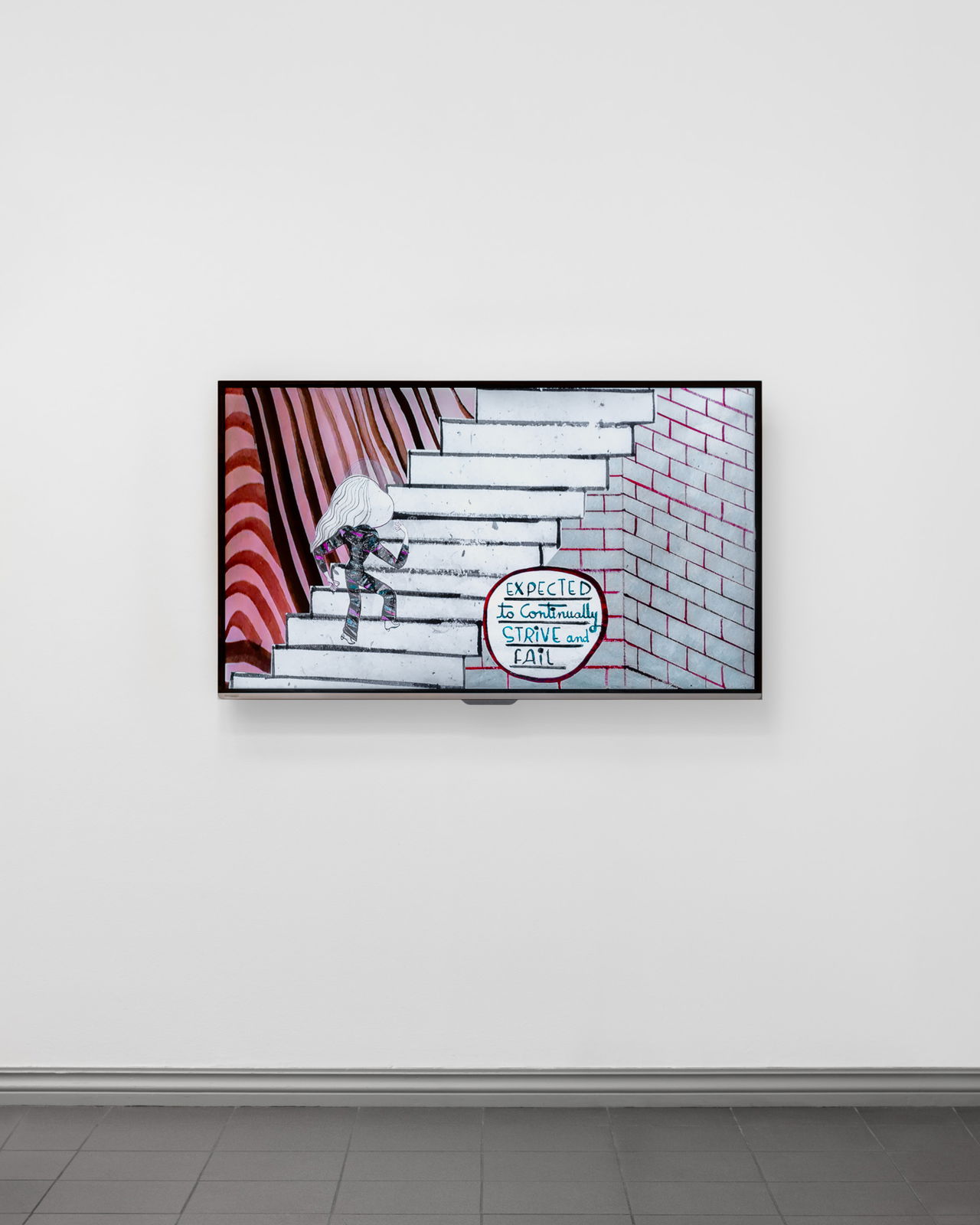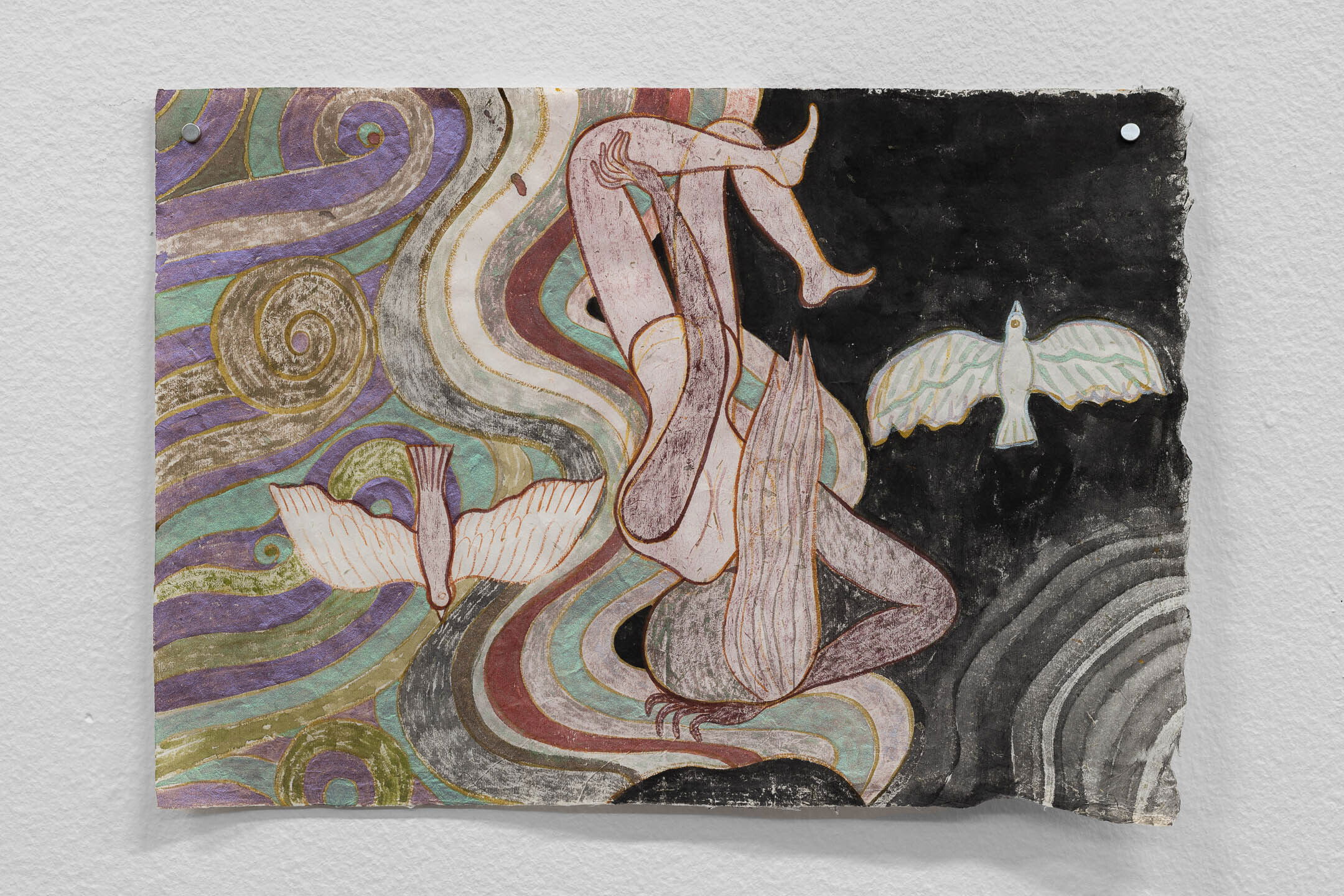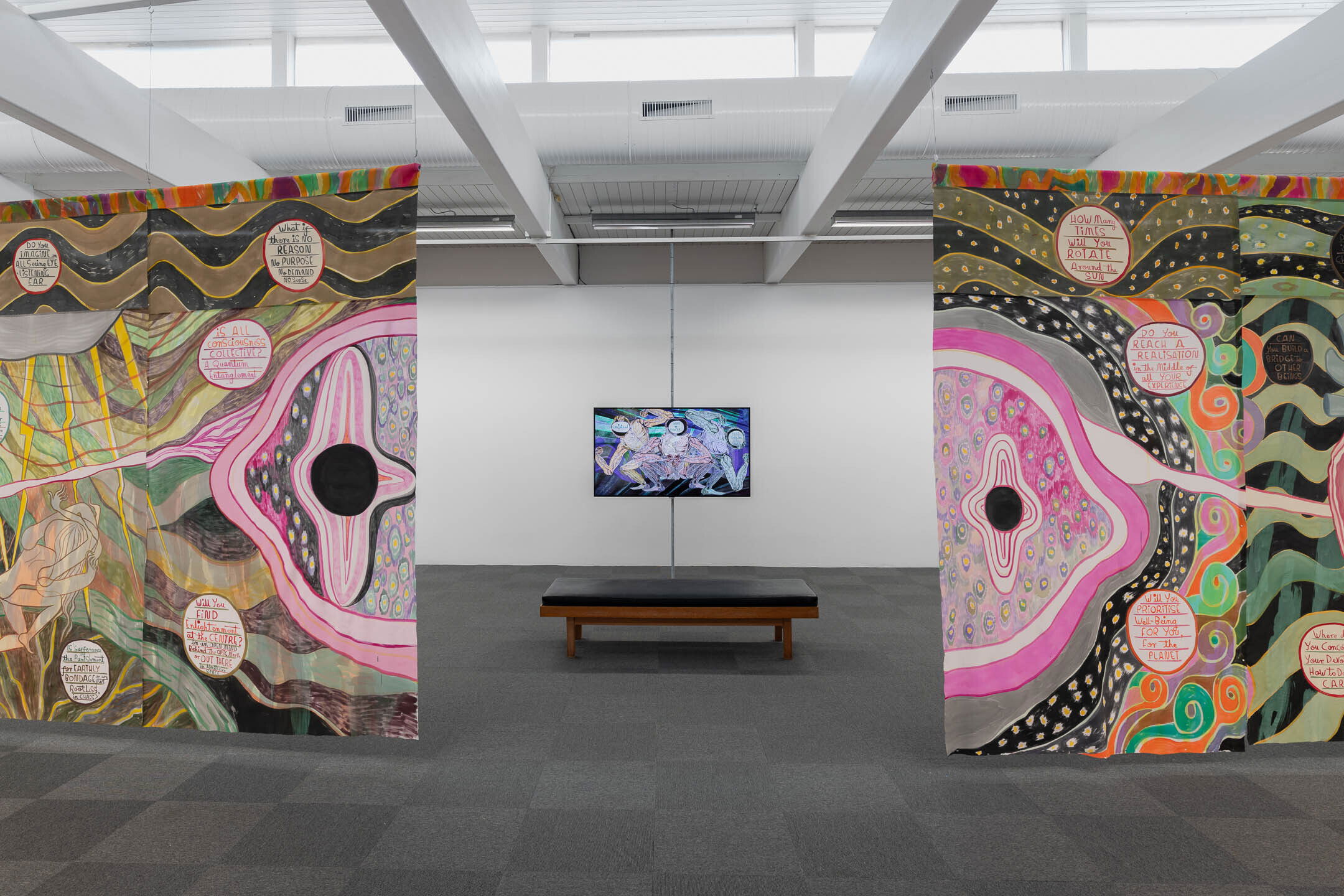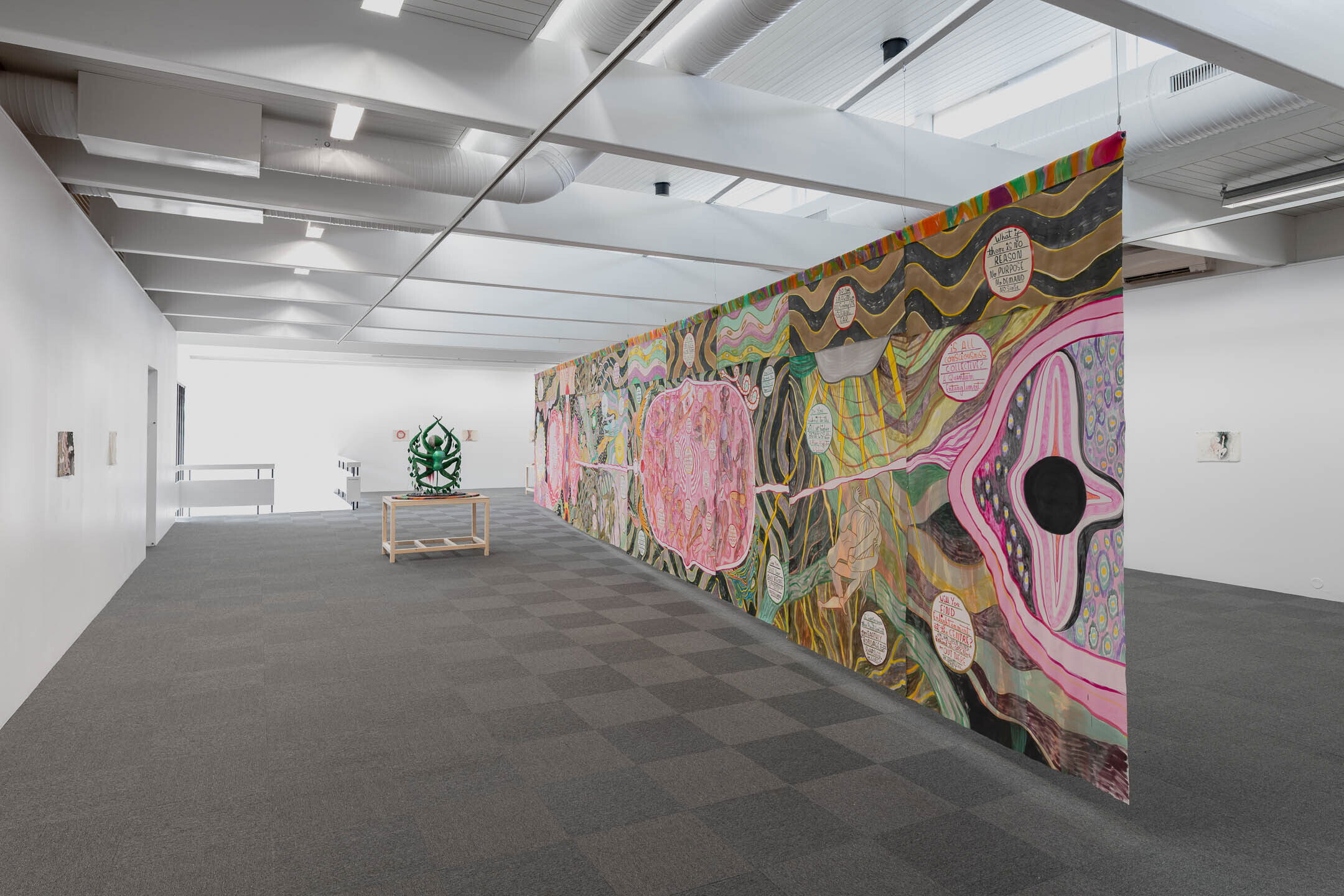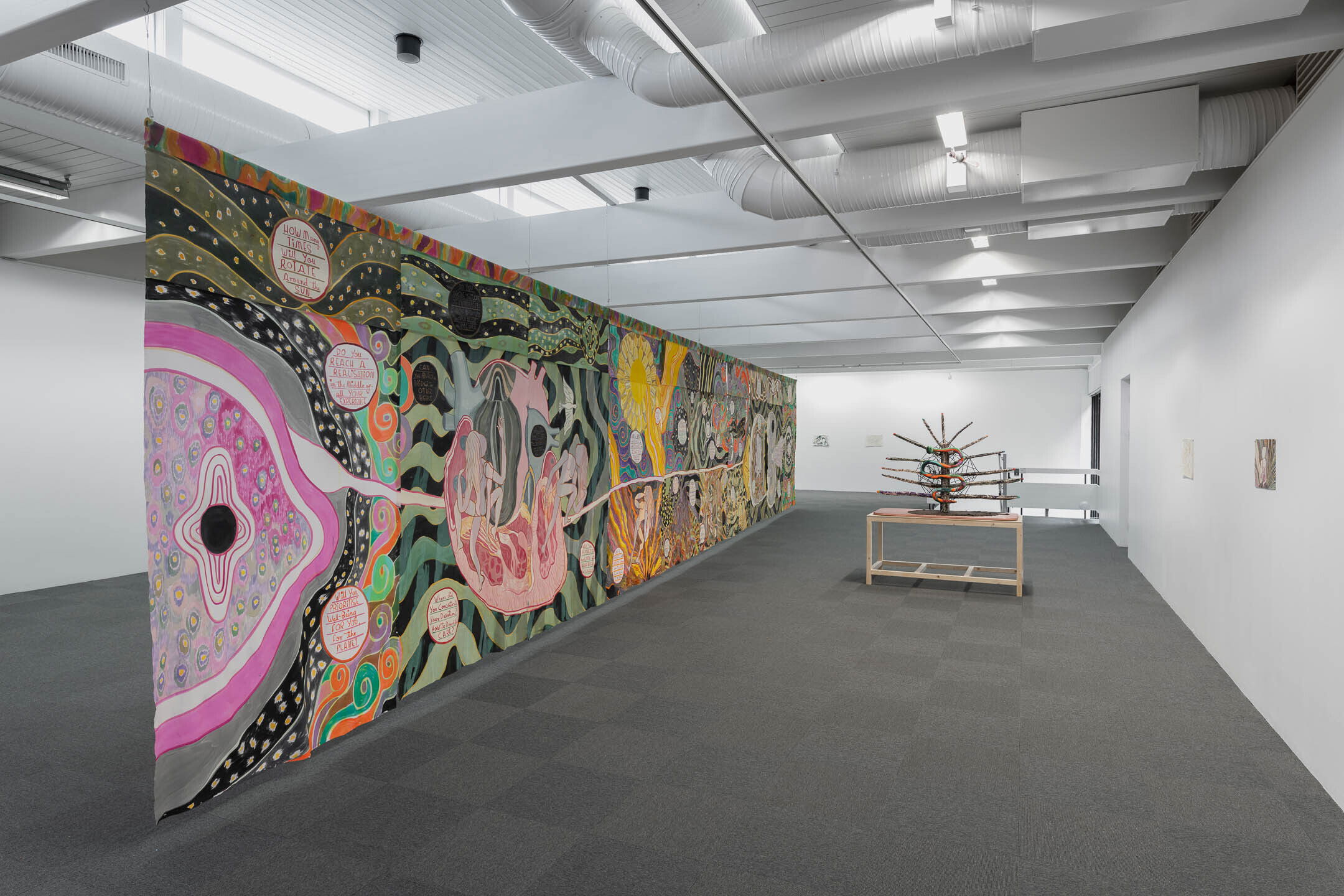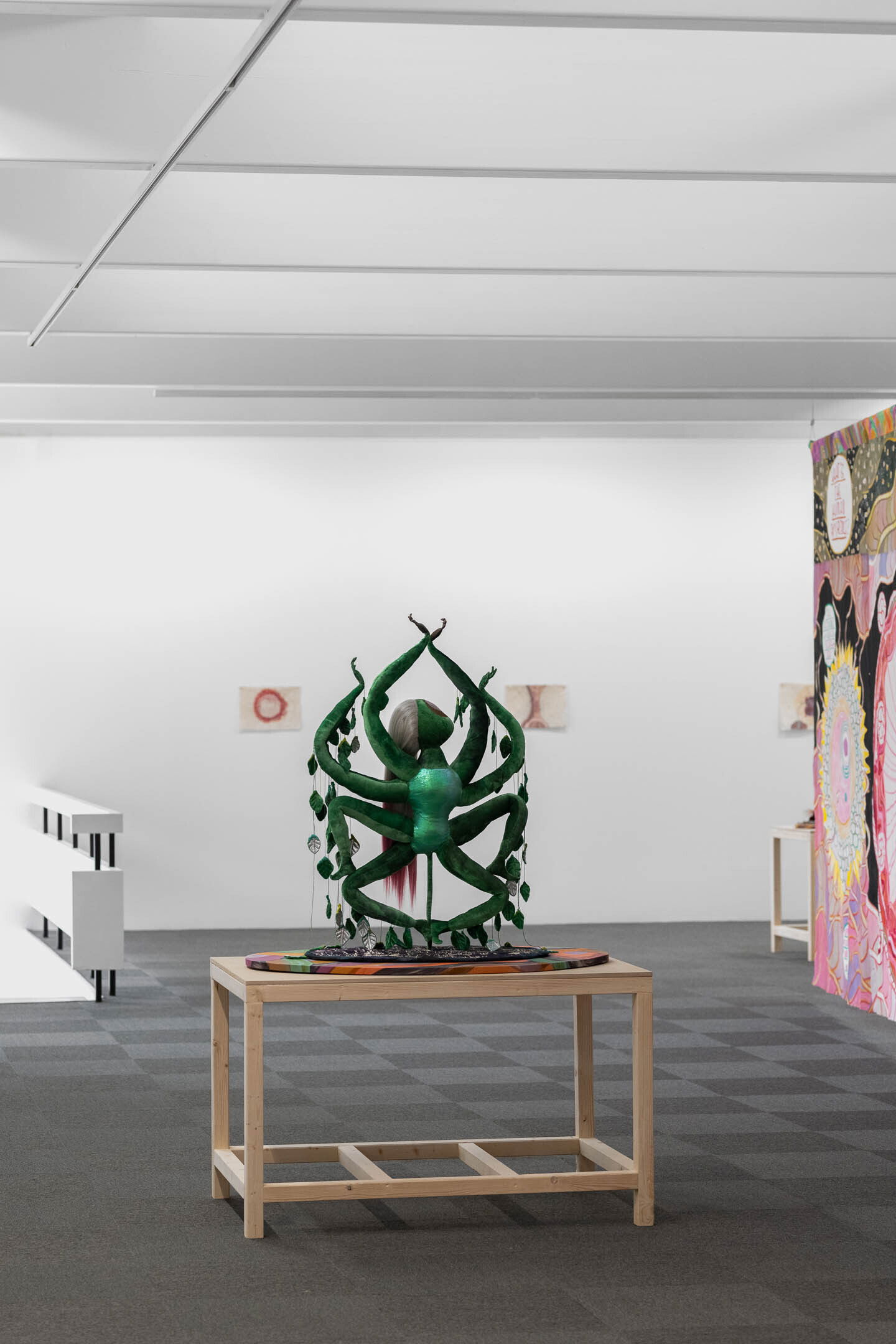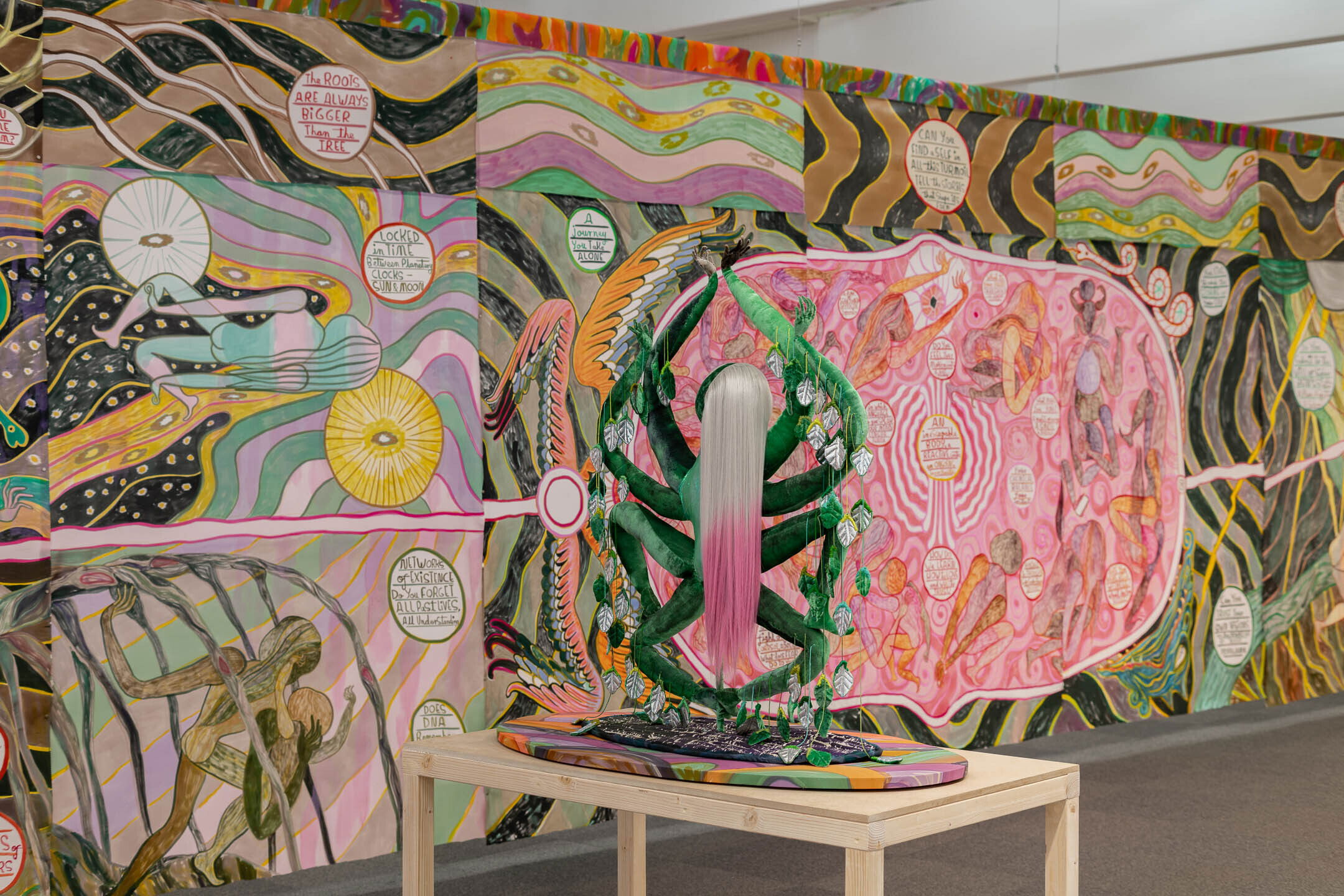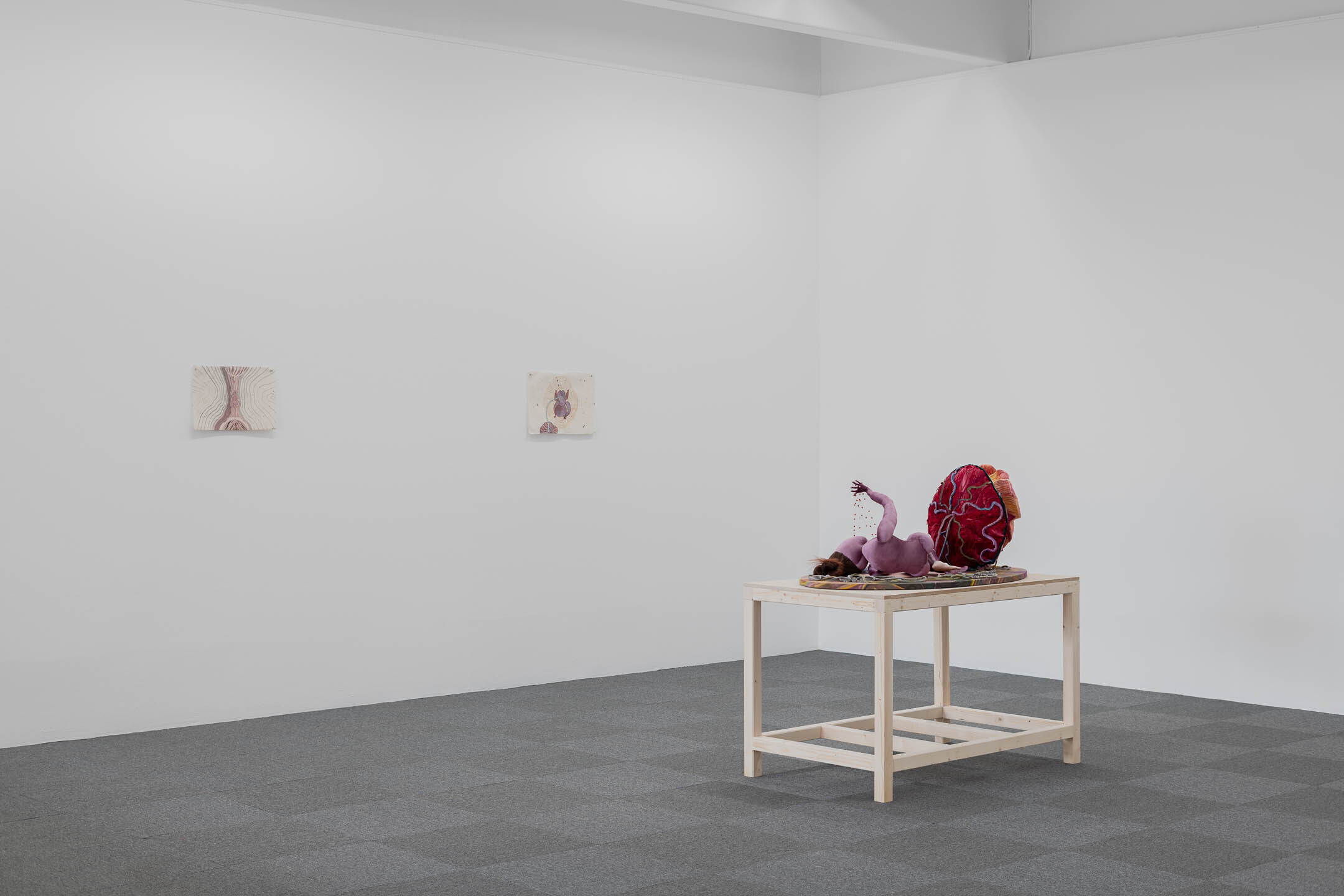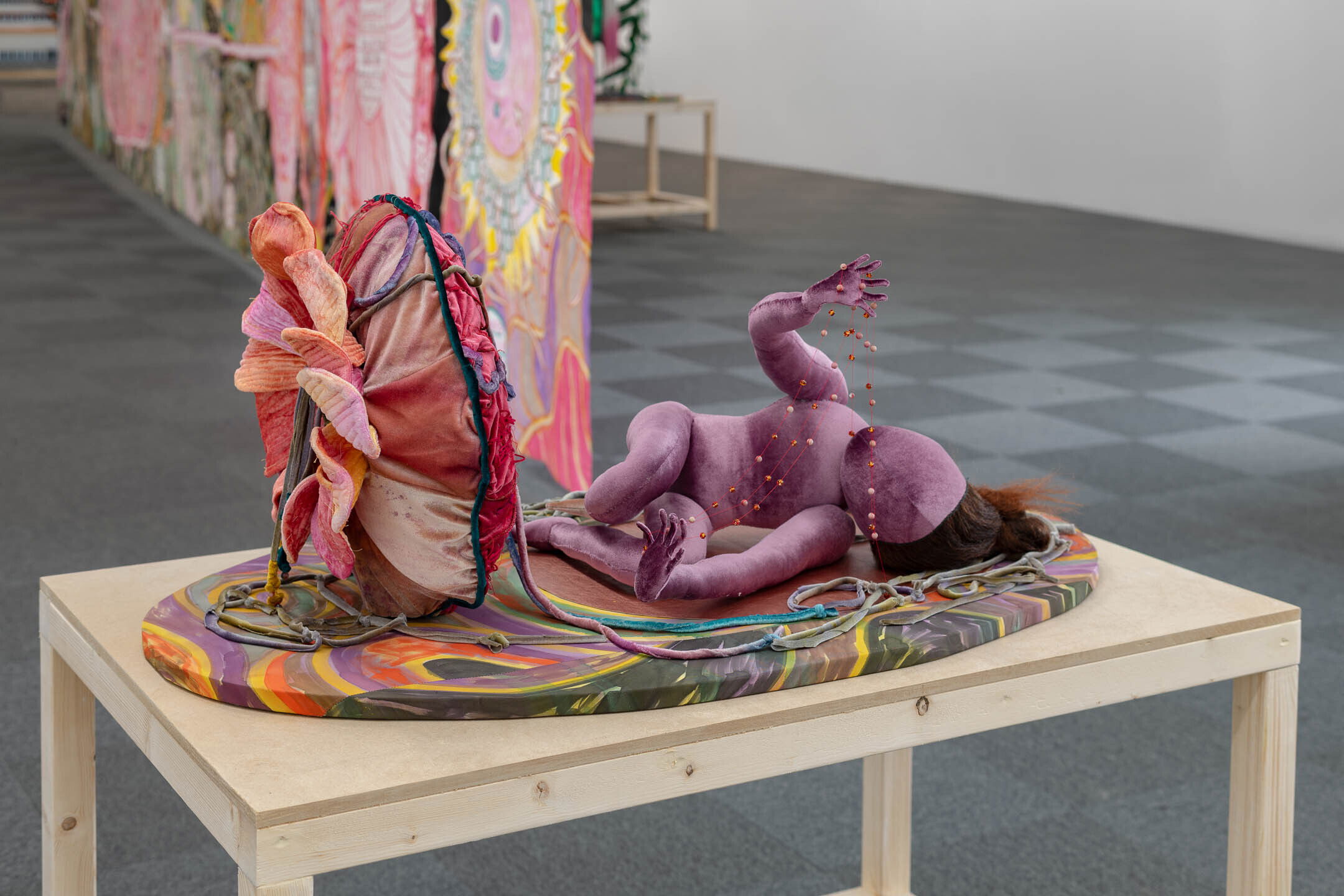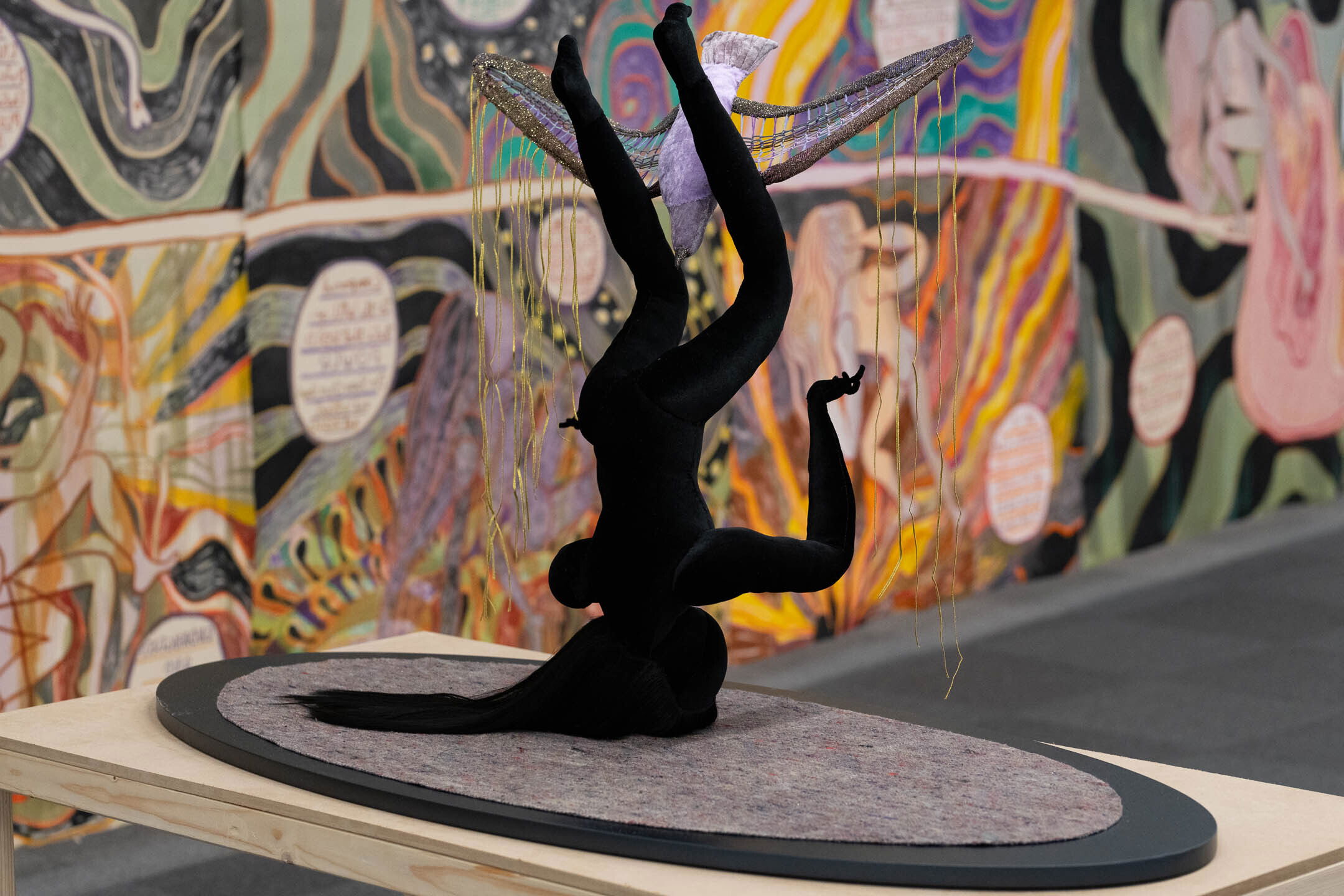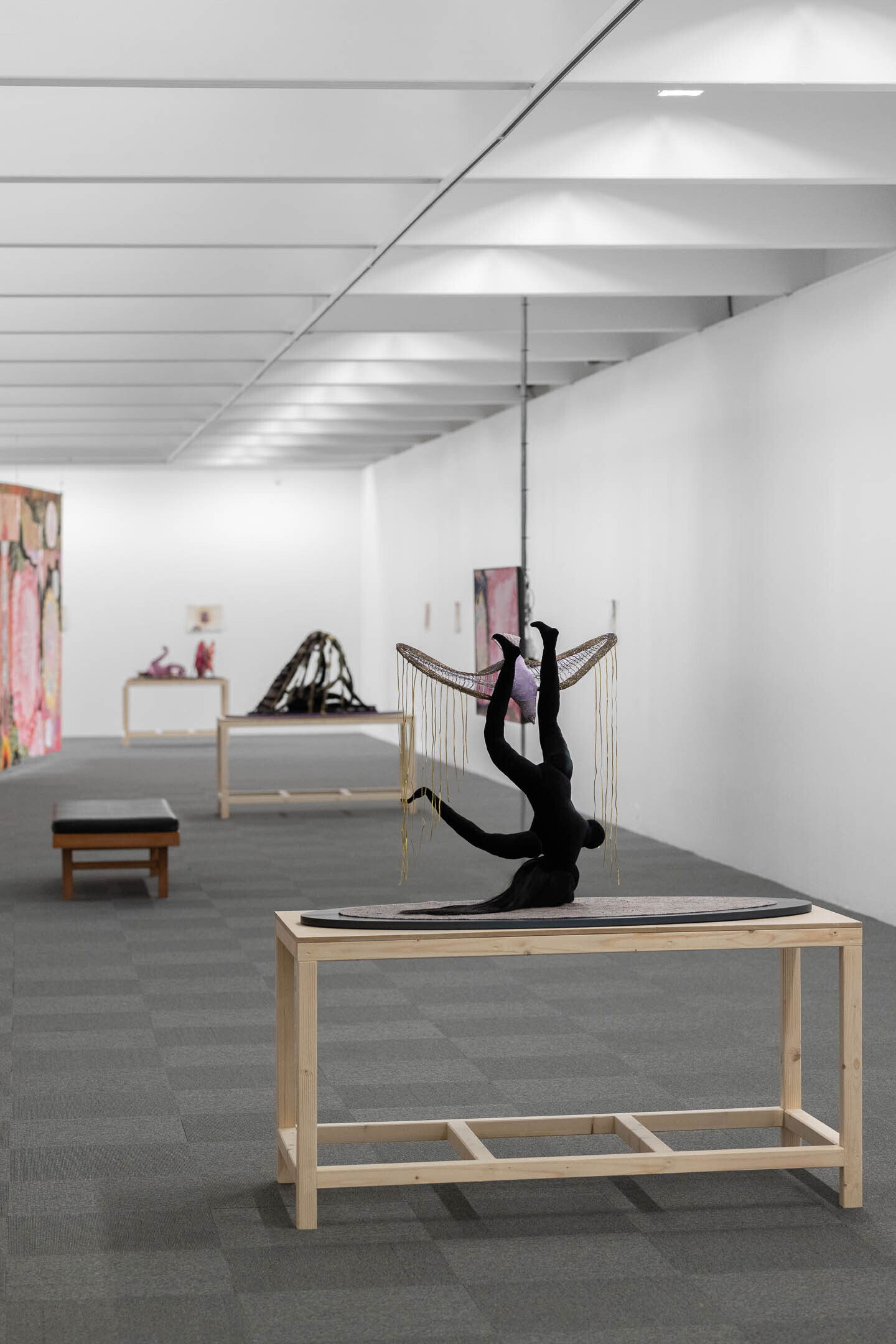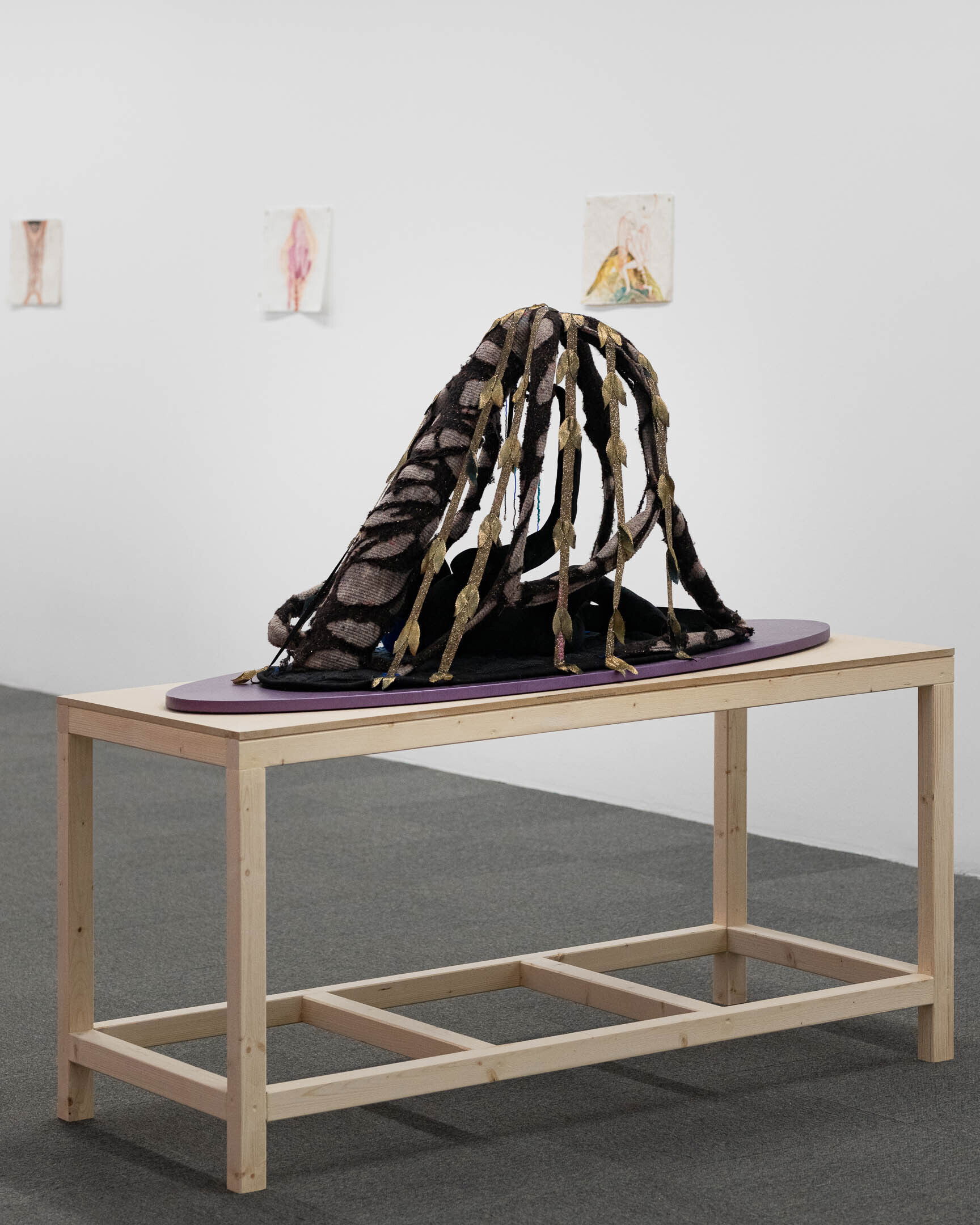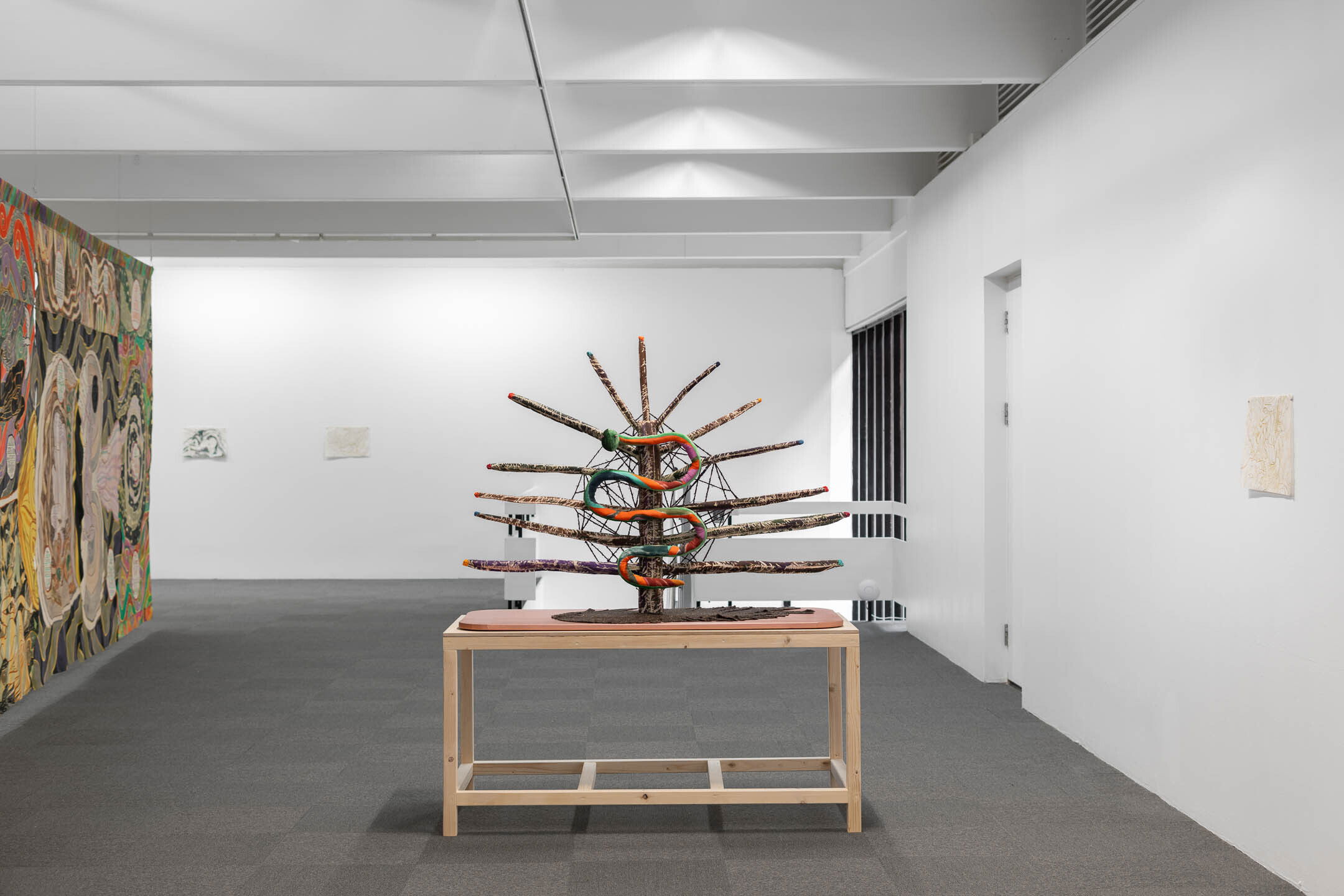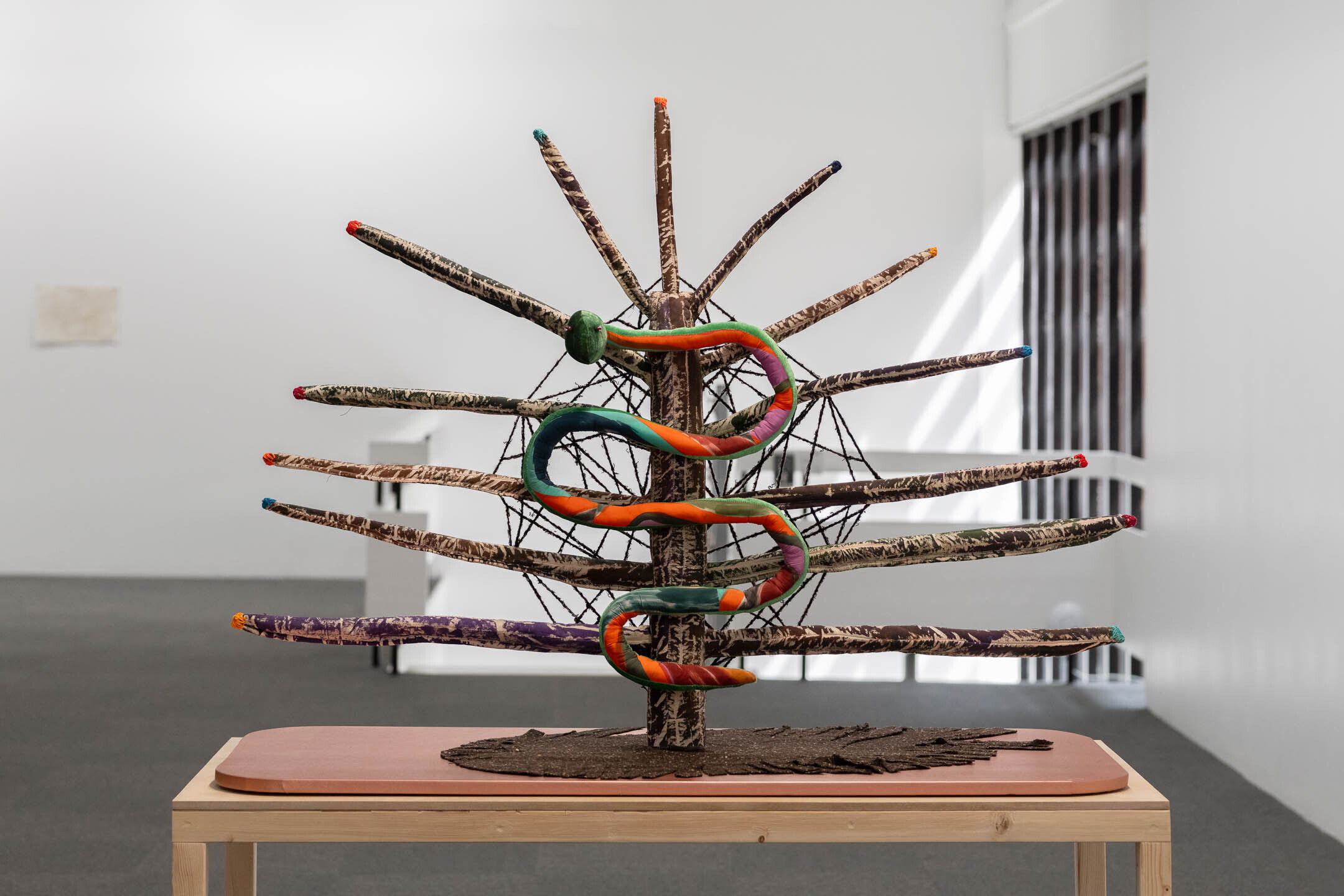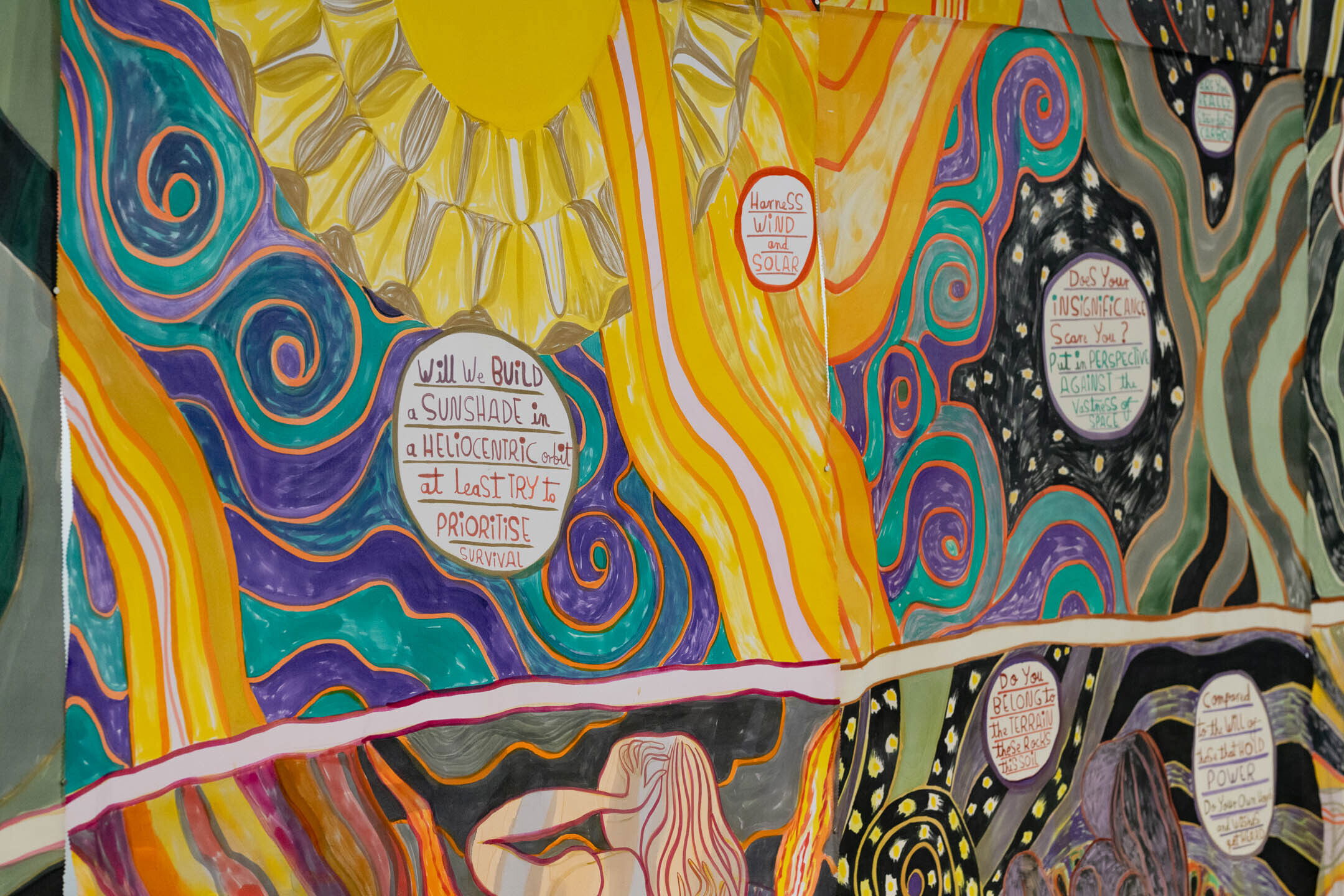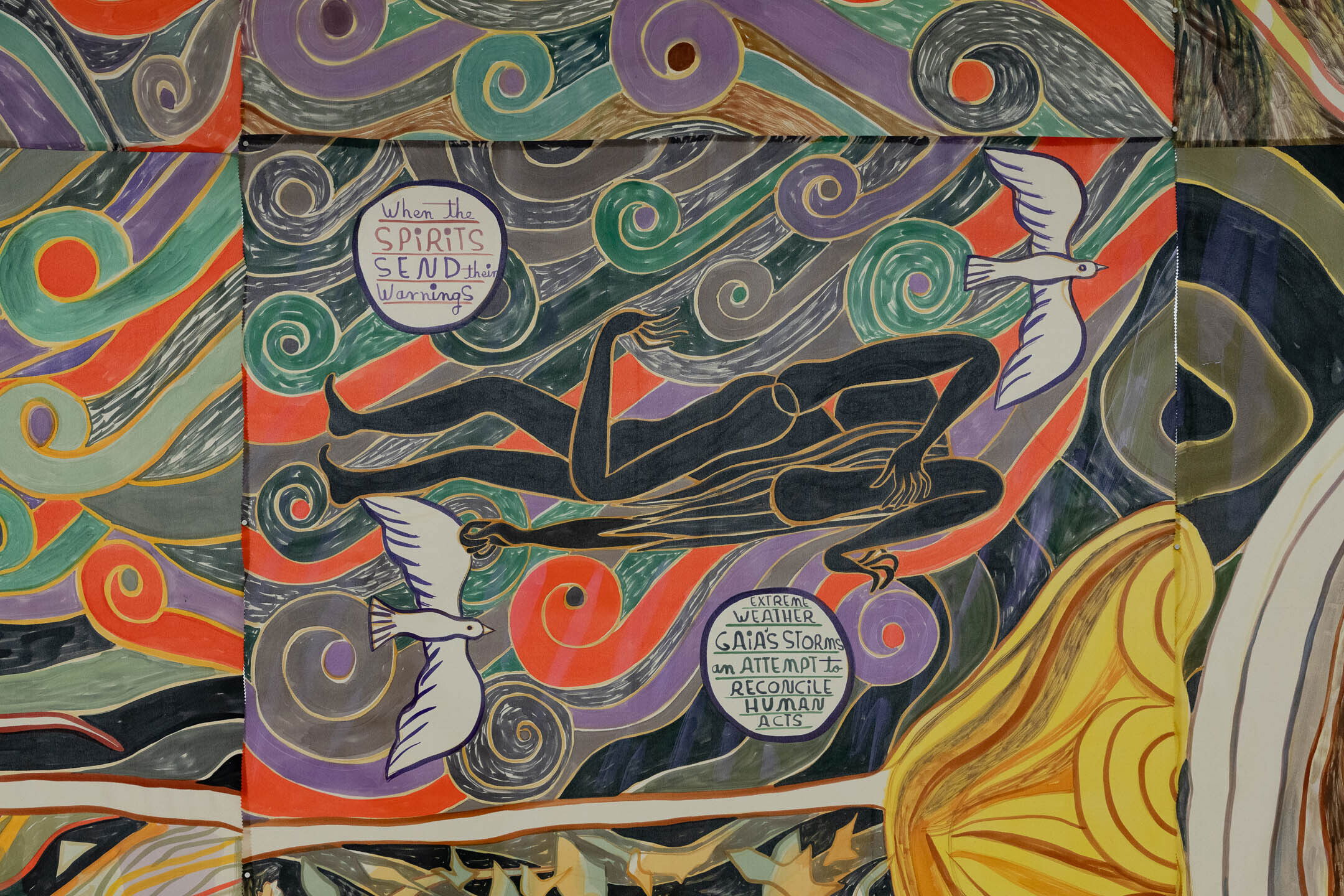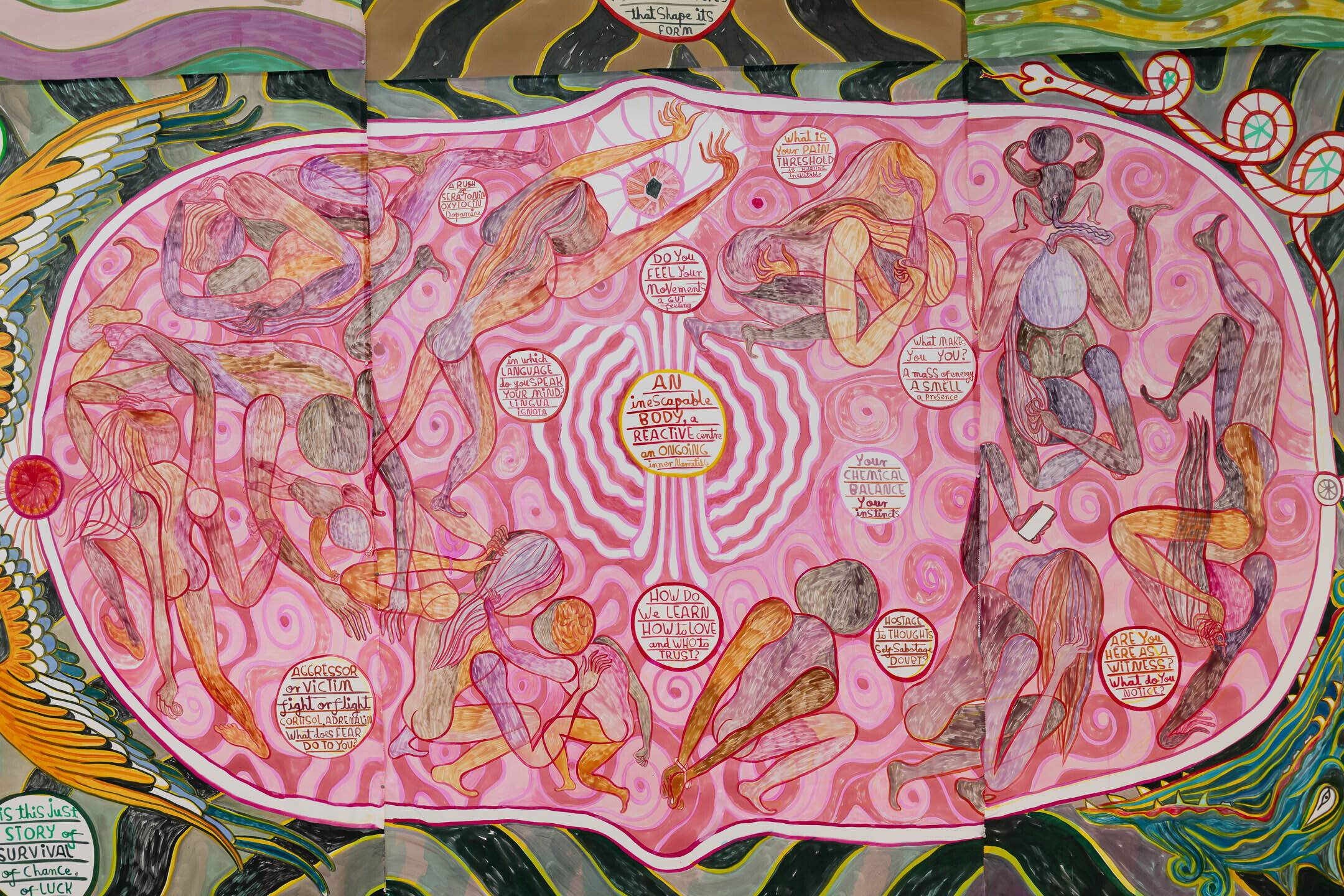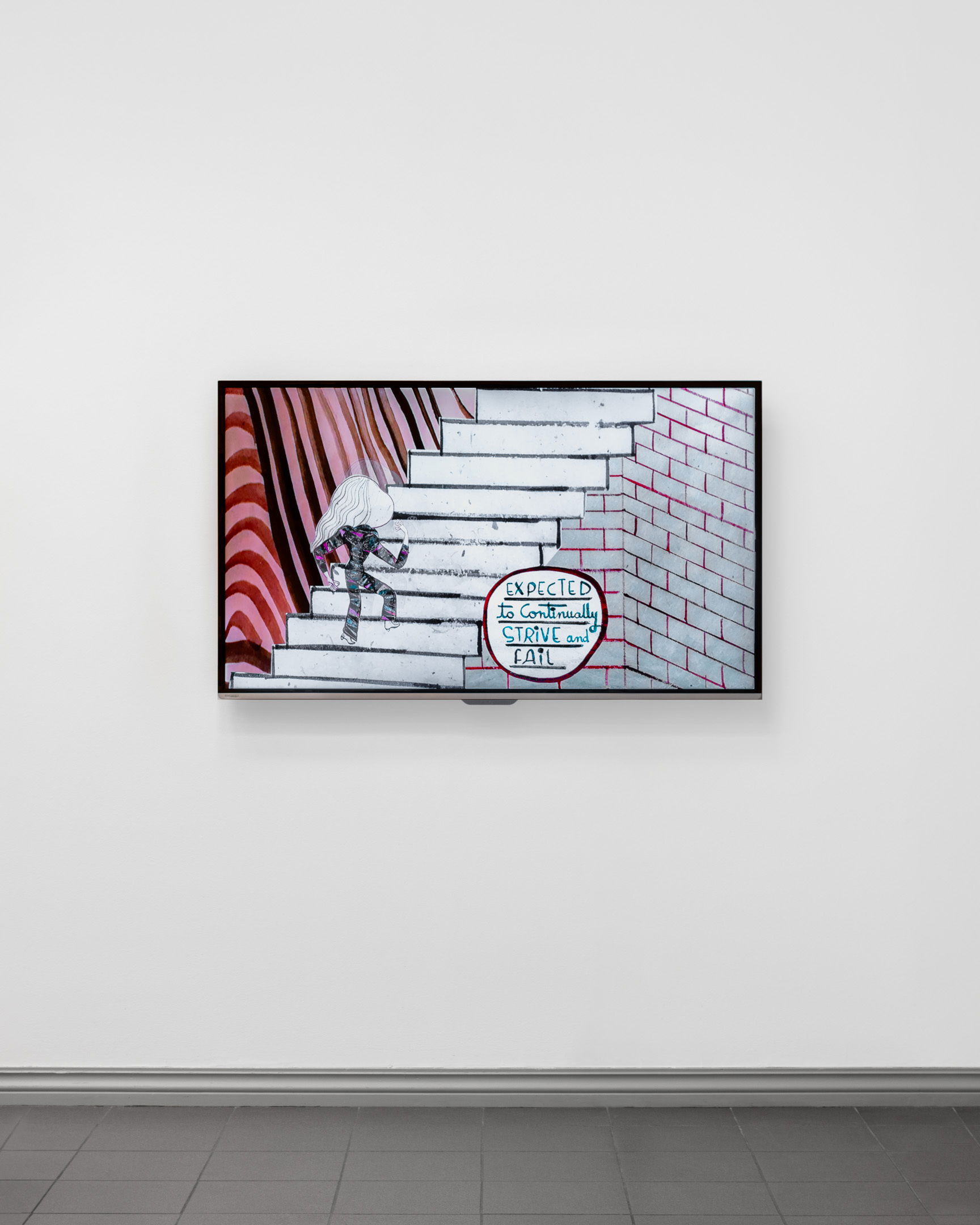
Emma Talbot, Optic Nerve. Credit: The artist.
Kunsthall Stavanger is proud to present the first solo exhibition in Scandinavia by English artist Emma Talbot. In her work, Talbot combines painting, drawing, sculpture and animation to explore urgent concerns such as gender inequality, climate collapse, birth, death, ageing, and what it means to be a human on this planet at this time. She often proposes future possibilities while considering the role of art as one of the most ancient forms of communication. Inspired by the writings of Hildegard von Bingen, Starhawk, and Isabelle Stengers, the artist engages mythico-poetic thinking and stylised figuration to illustrate narratives that are at once deeply personal and universally applicable. The Human Experience centers on the two life events that all humans must undergo: birth and death. These events serve as immovable markers, between which the span of a human lifetime is proposed as a fleeting, floating, volatile, temporal moment. Between these two
Kunsthall Stavanger is proud to present the first solo exhibition in Scandinavia by English artist Emma Talbot. In her work, Talbot combines painting, drawing, sculpture and animation to explore urgent concerns such as gender inequality, climate collapse, birth, death, ageing, and what it means to be a human on this planet at this time. She often proposes future possibilities while considering the role of art as one of the most ancient forms of communication. Inspired by the writings of Hildegard von Bingen, Starhawk, and Isabelle Stengers, the artist engages mythico-poetic thinking and stylised figuration to illustrate narratives that are at once deeply personal and universally applicable. The Human Experience centers on the two life events that all humans must undergo: birth and death. These events serve as immovable markers, between which the span of a human lifetime is proposed as a fleeting, floating, volatile, temporal moment. Between these two, says the artist, is “a net of understanding and a series of collisions.”
The short animation All That Is Buried (2020) serves as an introduction to the exhibition and speaks directly to Talbot’s search for a visual language beyond words. In the video, a hand-painted figure transcends a bricked-in cityscape to reach an older, quieter truth. The video describes the individual voice “overshadowed by a system of language that totally consumes you,” and directs the viewer to listen more deeply to the voice within that is neither a god nor a government. The artist asks us to step outside of the system, outside of the paradigms and preconceived structures into which we were born, to understand that “what seems impossible can happen.”
The video work The Trials (2022) serves as the focal point in Kunsthall Stavanger’s main gallery. The hand-painted animation is a visual epic depicting a reinterpretation of the Labors of Hercules. Here, the prominent ideal of the hero is challenged; the figure of Hercules replaced by that of an elderly woman. Rather than slaying, dominating, and taking, the old woman, with bent back and sagging skin, dauntlessly cares for monsters, grieves loss, tends to life, and imagines the ruined landscape whole again. The Trials touches on everything from globalisation, capitalism, the climate crisis, the shaming of ageing bodies, healthy food, female reproductive cycles and subjugation, to name only a few. It is a statement on human life but also an allegory of the current condition of our world. Despite its bleak subject, The Trials encourages us, like the woman, to take action with bolstering directives such as, “Action in our ever-changing present can rebalance the future”, and, “Don’t lose creative power”.
The video is flanked by two monumental silk paintings suspended from the ceiling that dominate the space and direct the flow of movement. Despite their size, the lightness of the material provides a sense of softness and intimacy within which to contemplate the deeper issues presented. The two paintings together form the description of a life: from birth to middle age and from middle age to death. The first panel, The Human Experience (Your Birth) (2023), presents the process of conception, development, birth, and early experiences, all set against a backdrop of storms. The second panel, The Human Experience (Your Death) (2023), depicts the ongoing narrative of ageing on a planet in chaos, and finally death as a gaseous exodus back into the original void. In the midpoint, middle age is represented by a large pink eye, perceived as a point of reflection and potential – a moment in which profound existential questions emerge. It is also where the artist currently places herself, giving the "eye" a double meaning of "I". In both paintings, the physicality of the human experience is centralised – the reality of existing within the bounds of an individual, inescapable body. Talbot’s stylised human figures are entangled with mythological motifs and organic patterns. Embedded in the paintings, texts such as “What makes you YOU?” and ”Are you here as a witness?” prompt the viewer to question their own understanding of themselves and their place in the larger story of human existence.
Placed around these central pieces is a series of five three-dimensional works that embody the idea of humanity as inseparable from the natural world. In Spirit (2023) presents a simplified human figure suspended from a bird’s wings. The connection between mother and child, past and present, is made evident in What Passes between Us (2023), in which a human form is attached to a placental flower. In Rootless Plant, the human takes the form of a many-armed green figure, reminiscent of depictions of ancient gods. Resting Place suggests the final destination of human life within the sheltering roots of an ancestral tree. Life Forms, the only sculpture lacking a human figure, portrays a spiny tree with a spider web and a serpent, calling on some of humanity’s oldest interpretations of how our world was formed. These works are conceived of as three-dimensional drawings in their attempt to materialise an intangible idea – something that can be felt but never fully described. To this end, Talbot invokes mythico-religious imagery divorced from moralistic goals.
The ecstatic visual elements from the animations, paintings, and 3D works are echoed in a series of drawings installed around the gallery. Drawn in watercolour on Khadi paper, these works portray singular formative moments and situations in the human lifecycle, from the safety of the womb, to birth into a volatile world, to companionship, chaos, and grief. Like the levity of the silk paintings and the softness of the materials in the 3D works, the wavering colours and the tactility of the paper in the drawings provide a haptic element to the imagery, allowing the information presented to be understood in the body as well as the mind.
Taken together, the works in The Human Experience delicately and deftly handle the impossibility of recounting our own births and deaths, and peel back the mundane layers of the everyday to reveal the great mystery that we are all living. As Talbot notes, “It aims to question what we see, what we notice, and what we understand”. The works in this exhibition cast a harsh light onto the reality of our current condition. Yet they are also firmly rooted in Talbot’s belief in the ability of all humans to see beyond the present situation and to creatively imagine an alternative future.
Text by Heather Jones.
The artist would like to thank Galerie Onrust Amsterdam and Petra Rinck Galerie Düsseldorf.
The exhibition will travel to Kunsthalle Giessen, where it will be on view December 1, 2023 - February 18, 2024.
Image credit: Erik Sæter Jørgensen. All copyrights: Kunsthall Stavanger.
Emma Talbot (b. 1969, Stourbridge, lives and works in London) is the winner of the 8th Max Mara Art Prize for Women and was included in The Milk of Dreams at the Venice Biennale in 2022. Her work has previously been exhibited at Whitechapel, London; Collezione Maramotti, Italy; Beiqiu Museum, China; Victoria Miro, London; Eastside Projects, Birmingham; Kunsthaus Centre D’Art Pasquart, Switzerland; Arcadia Missa, New York; KM21, The Hague, Netherlands; Turner Contemporary, Margate; The Freud Museum; London; Lisson Gallery, London; Galerie Onrust, Amsterdam; Petra Rinck Galerie, Düsseldorf; Neuer Aachener Kunstverein, Germany and Tate St.Ives, England. Talbot studied at Birmingham Institute of Art & Design og Royal College of Art in London.















